
SUMMARY
Product marketing fuels the transition of your product from a concept to the customer
Product marketing is a jigsaw puzzle that you can solve if you have the right strategy to piece it together
From setting good goals to tracking your performance, a great marketing strategy requires a comprehensive roadmap for success, here is an eight-step plan to build your product marketing strategy
You’ve spent weeks and months building your product. Now it’s time to launch it for the world, but you don’t know where to begin. The fact that 95% of newly launched products fail every year adds to your worries. What’s the best solution?
The answer you’re looking for is a carefully crafted product marketing strategy.
Product marketing fuels the transition of your product from a concept to the customer. It’s the process of putting your product in front of the people and influencing their purchase decisions.
While a product marketing strategy is crucial for any startup’s success, building a winning strategy is no easy feat. It requires meticulous planning, ideation, and analysis. If you’re eager to learn the nitty-gritty of product marketing to design your own strategy, this blog will offer a deep dive into the concept.
What Is Product Marketing?
Simply put, product marketing is the technique of building a product’s identity and increasing awareness by communicating its selling points and differentiators. Product marketers determine the ideal positioning for a product and craft the brand messaging for the target buyers.
Unlike the more extensive spectrum of marketing, product marketing is a narrower concept that focuses only on the product/market fit to market a brand.
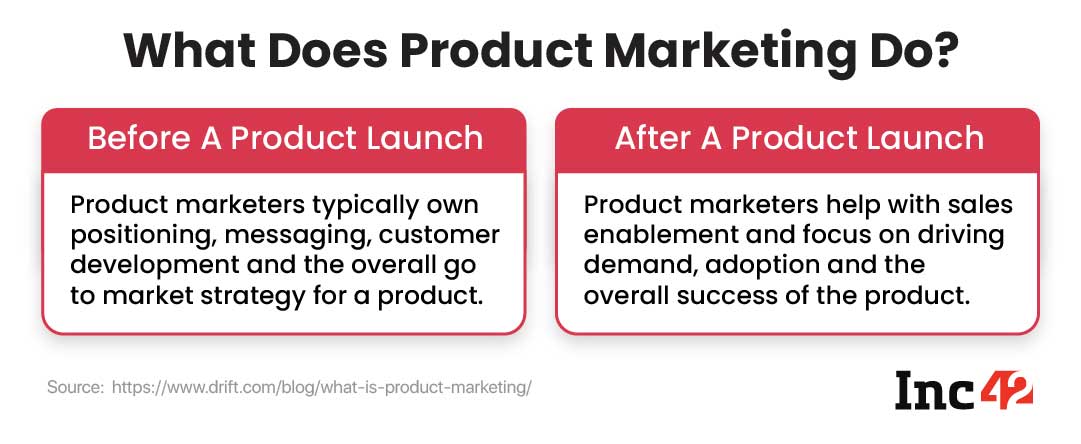
How To Build An Effective Product Marketing Strategy For Your Startup
Creating a product marketing plan for a startup may seem challenging at first. But once you have the proper understanding of the process, you can draft your strategy effortlessly.
So, let’s look at an eight-step plan to build your product marketing strategy with examples showing how it’s done.
Lay The Foundation
Before you set out to market your product, dig deeper into your industry, audience, and competitors to create a solid game plan. You can set the basis of your marketing strategy only when you have complete clarity of your target demographic, competitors, and goals.
Let’s break down each of these components to drive your research efforts:
Understand Your Target Audience
The starting point of any marketing strategy is the target audience—whether you’re a startup or an enterprise and whether you’re a product or service-based business. When you know exactly who you’re selling to, it’s easier to identify their pain points, define your key selling points, and target specific demographics.
Defining your target buyers will essentially prepare the right groundwork for your product marketing strategy.
Here’s a helpful list of questions to determine your target audience:
- What is the primary need(s) that your product fulfils?
- Who’s the ideal user for your product?
- Is your product suitable for users or businesses meeting specific characteristics?
Let’s look at DronaHQ’s example to put this into context. The brand primarily targets new-age businesses and startups not reliant on technology. Its target audience includes individuals in positions of product managers, application leaders, and IT team leads.
Analyse Your Competitors
The next part of your research should focus on studying the market. Perform competitor research to focus on businesses operating in your niche or industry. You can use competitor research tools like SEMrush, SimilarWeb, and BuiltWith or manually examine their presence on social media and websites.
Once you’ve shortlisted your competitors, segment them into two main categories:
- Primary competitors: Brands offering the same/similar product as you and targeting the same audience as you
- Secondary competitors: Brands offering the same/similar product as you but targeting a different demographic
Looking at your competition can clarify the scope of your marketing efforts. It’ll also help in positioning your product in the market.
Set Clear And Realistic Goals
As a product startup, it’s crucial to define your idea of success early on. Without a set of goals to reach, you can’t create the right roadmap for your product marketing strategy.
Besides, putting your vision into paper can bring more precision to your tactics. Once you’re clear of what to achieve, planning how to achieve it becomes a lot easier. So, conclude your research efforts by spelling out your short and long-term goals.
Segment Your Audience
So, you’ve identified your target audience, weighed up your competitors, and set your marketing goals. What do you do with all this information?
The next step of your strategy should focus on creating varied customer personas and segmenting your target audience.
Simply put, audience segmentation is the technique of dividing your primary audience into smaller subgroups according to a set of parameters. This segmentation can make your strategy more specific and meaningful to your buyers’ needs. It also allows you to produce content that resonates with them.
Here are a few standard parameters for segmenting your audience:
- Location: dividing your buyers based on different regions—both domestic and international
- Age: differentiating your younger buyers from the old ones
- Income: segmenting your potential customers as per their purchasing power
- Pain points: dividing your prospects based on the challenges they face
Audience segmentation is the easiest way to personalise your communication with your audience. It helps position your product and establishes your brand messaging to hit the right chords with your buyers.
Toppr, a personalised learning app, leveraged intelligent user segmentation to skyrocket sales. The brand used action-based segmentation to target its users through personalised push notifications and emails. This led to a whopping 133% increase in its conversions.
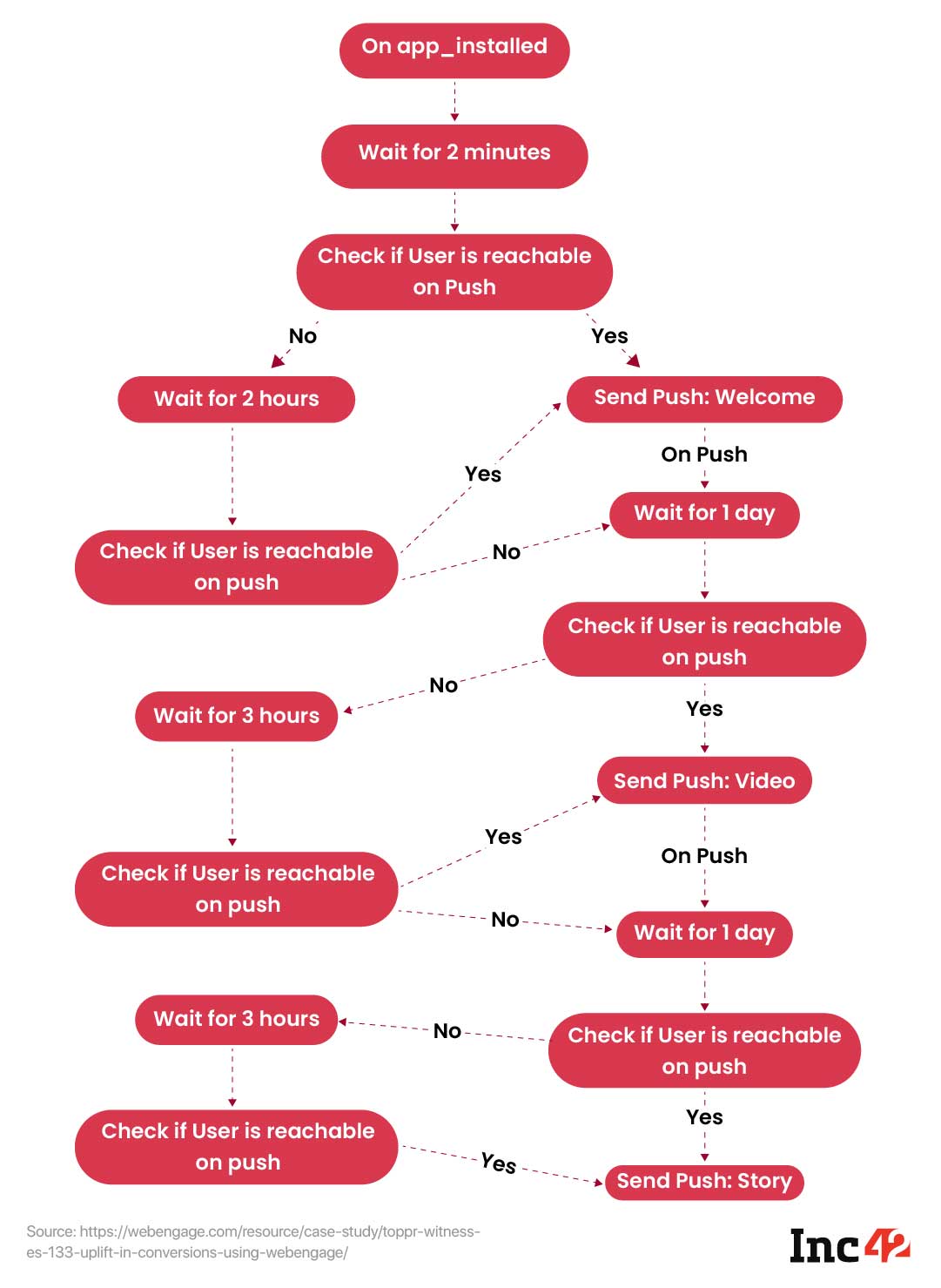
Make Pricing And Packaging Decisions
When you know exactly who you’re selling to, you have to figure out how. This is where your positioning and pricing come into the picture.
Positioning your product is crucial to zero in on your product’s value propositions. It creates an alignment between your USPs and the target audience by clarifying what problems your product can solve. Brand positioning also compares your product against competitors to bring out the key differentiators.
Here are some prompts to get you started with the positioning process:
- Who is your product for?
- What problem(s) does your product solve?
- How does your product offer utility for your users?
- What factors set you apart from the competition?
- What are the features unique to your product?
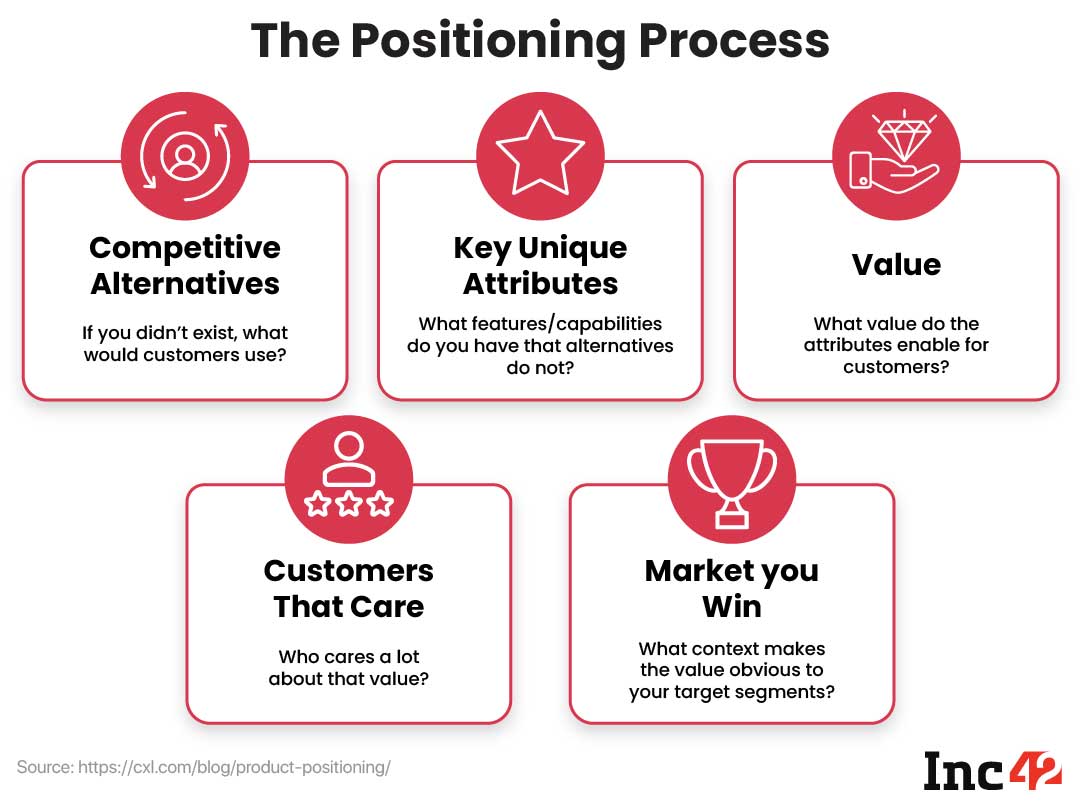
Answering these questions will lay out the perfect positioning plan for your marketing campaigns. Once you’ve prepared this plan, your next stop is the pricing strategy.
Pricing can be the real game-changer for your business. When buyers compare multiple options, pricing can take the front seat before features and functionality. So, invest your time in determining the best pricing strategy for your product.
Here are some standard pricing models for product-based startups:
- Competitive pricing: This pricing strategy focuses on mimicking your competitors. So, go for the prices that your competing businesses are charging after a thorough evaluation of their financial workflows.
- Value-based pricing: This is a more complex pricing strategy that determines your product’s price according to its perceived or estimated value for the end-user. You can calculate the price based on the quality, user experience, and unique features that you offer.
Here’s an easy formula to set value-based pricing for your product.
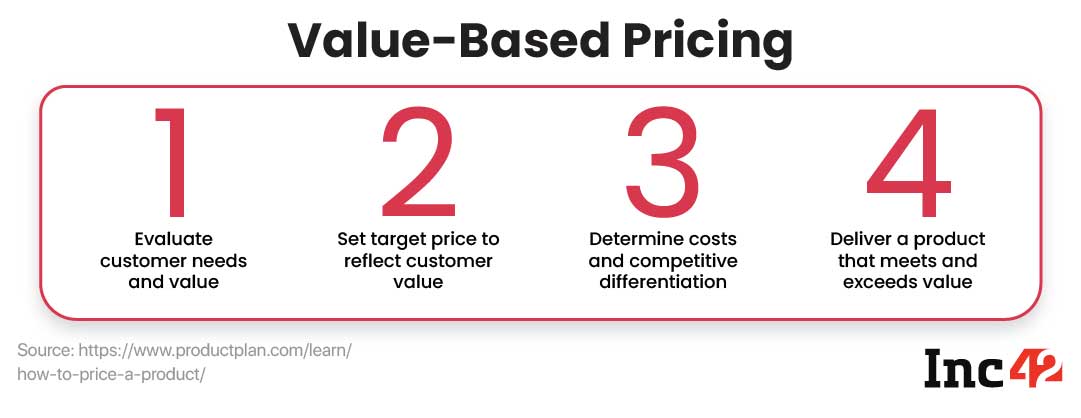
Establishing your product positioning and pricing will create a robust foundation for your marketing efforts. You can now focus your efforts on ideating the finer details of your marketing plan.
Collaborate And Align Your Goals With The Sales Team
Product marketing lies at the intersection of your product, marketing, and sales teams. They have to work symbiotically to fulfill your marketing goals.
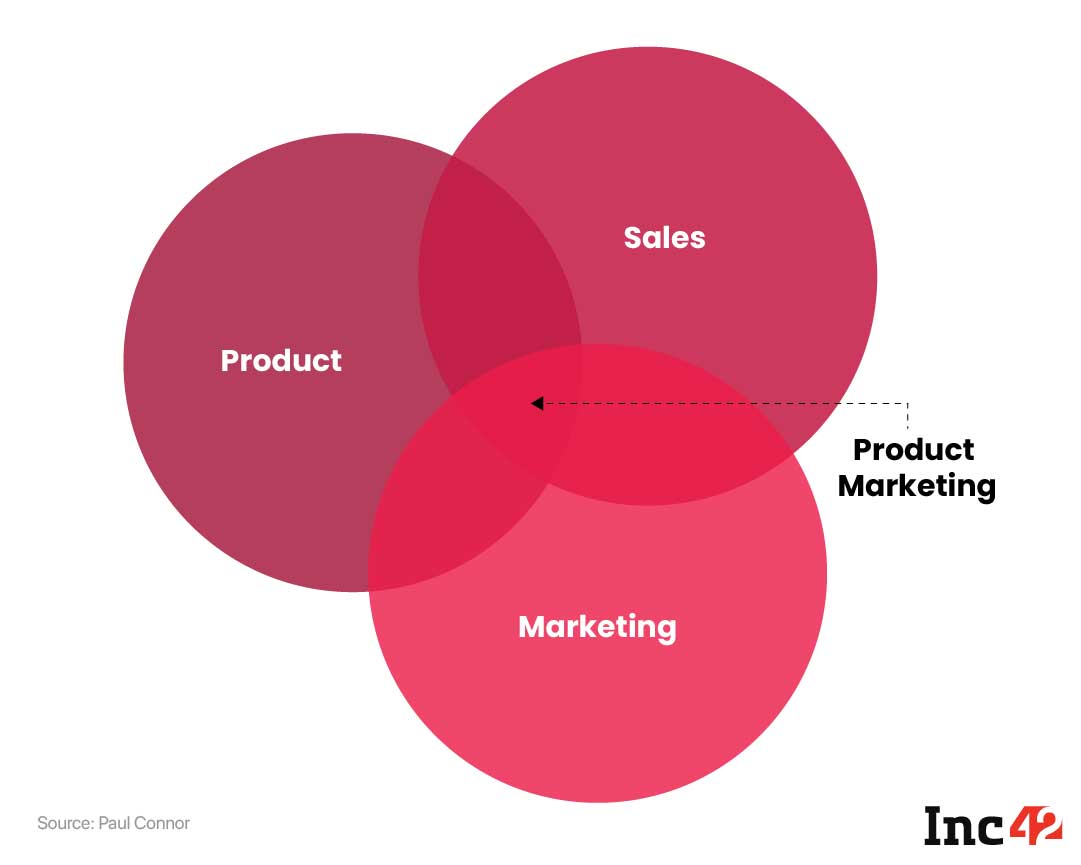
While the marketing team builds your brand awareness and generates leads, your sales reps will drive conversions and achieve the revenue targets.
So, keeping your sales team in the loop is a crucial step while outlining your marketing plan. Tell them about your goals, tactics, acquisition channels, and the complete roadmap to bring everyone on the same page. Your sales team can also contribute to audience segmentation, deciding the ideal pricing and similar aspects.
Moreover, your sales reps can boost your marketing efforts with a complete rundown of the product’s features. Deep product knowledge can make your campaigns more value-packed and accurate.
Leverage Social Media Marketing
With 67% of users claiming to have bought a product that they first saw on social media, there’s no doubt that social media is a goldmine for product marketers.
Social media is the perfect place to map out your entire marketing funnel—from creating awareness and generating interest to persuading consideration and finalising purchases. So, plan your marketing strategy for every stage and leverage social media channels relevant to your business.
Let’s look at some creative ways to promote your product on social media:
- Double down on advertising: Paid ads and sponsored posts on social media can create significant buzz around your product. It’s a great way to put your brand in front of your audience and increase awareness.
Swiggy launched a series of Snapchat ads when it first launched Swiggy Instamart. The campaign targeted its young buyers and spread the word about the app’s latest offering.
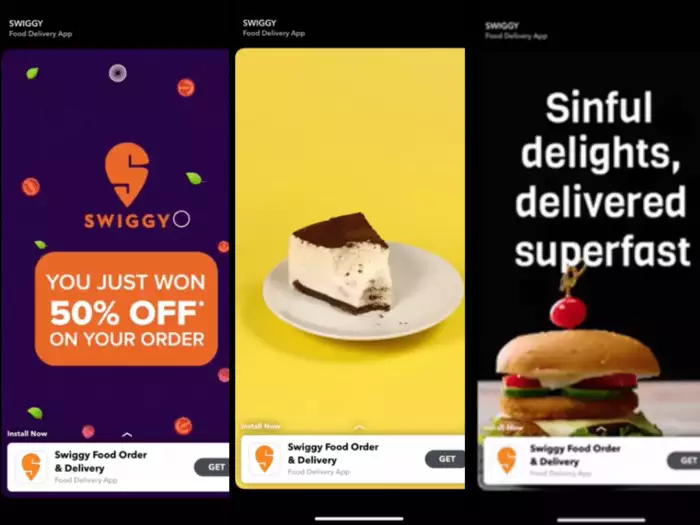
- Create social proof: Social media is the perfect place to build your credibility when you’re new to the market. Post user reviews and encourage your users to publish reviews for your product on their social networks. This will go a long way in creating trust around your brand.
Dhiyo, an AI-based job search platform for blue-collar workers, implemented this tactic with its user reviews. These posts contribute to their brand image.

- Post value-added content: You can create a solid community for your brand and enhance engagement by publishing meaningful content. Aim to add value to your users’ lives through your social media posts.
Practo’s Instagram feed shows how it’s done. The brand produces engaging content to entertain and educate its followers.

Strategically using social media can potentially skyrocket your marketing efforts. So, design a full-fledged plan for social media marketing and drive more sales for your business.
Create High-Value Product Assets
Creating marketing assets is the easiest way to promote your product beyond social media and maximise your marketing ROI. These high-value assets will not only get more eyes to your product, but it’ll also attract the right kind of people. It’s a win-win on both fronts.
Here are some marketing assets you can add to your promotional mix:
- Case studies: How do you prove your product’s utility and convince your prospective buyers of the benefits you’re promising? Easy—with well-detailed, data-packed case studies. Case studies can work wonders in the consideration stage of your funnel and accelerate your buyers’ purchase decisions.
Happay has a dedicated section displaying video testimonials along with detailed case studies to underline its product’s value.

- Press releases: An essential part of brand awareness is earning press mentions. Publish your thought leadership and marketing content on media websites to generate positive publicity for your product.
Look at how FTCash spotlights its media mentions on the website to market its product.

- Whitepapers: You can offer value and establish your authority as a reliable resource with value-rich whitepapers. This asset can inform your audience of the research and efforts into your product.
Innovacer, for instance, has created a complete repository of whitepapers to build its case. Its whitepapers are a source of information and offer value to the readers.

Besides these popular marketing assets, you can also create industry reports and publish surveys to boost your brand credibility.
Allocate A Budget For The Campaign
Creating a marketing budget is essential to keep your expenses in control and chalk out the next steps according to your ROI. You have to evaluate your goals to set a budget estimate for your product marketing strategy.
Use these best practices to make budgeting more seamless:
- Create SMART goals: SMART goals elaborate each goal from different dimensions. So, you have greater clarity about the tactics you’ll need to reach this goal. You can then set aside a part of your budget for each tactic.
- Choose a timeline: Allocate your budget for a fixed timeline. Your goals should align with the timeline you decide on. You can modify your allocation based on the performance of each tactic within this timeline.
- Measure expected ROI: Calculating your ROI for each marketing activity can also help divide the budget. High-ROI tactics would naturally get a more significant chunk of your budget.
Remember: budget allocation involves many moving parts. So, prepare yourself to continuously analyse your performance to re-allocate the resources for your marketing plan.
Measure Performance And Iterate
The only way to optimise your marketing strategy and increase the results is by analysing and iterating your plan.
Product marketing is more than just signups, purchases, and upgrades. Your marketing performance depends on active product usage, paid activations, churn, and a lot more. So, tracking your marketing ROI will involve multiple metrics.
Here are some standard KPIs you can use to measure your success:
- Frequency of high-value actions
- Product activity and user behaviour
- Number of inbound leads
- Number of assisted conversion
- Cost per acquisition
- Sales conversion rate
Take a second look at your goals and choose the relevant metrics. Measure your success regularly to modify your strategy timely.
Product Marketing For The Win
Product marketing is a jigsaw puzzle that you can solve if you have the right strategy to piece it together. From setting good goals to tracking your performance, a great marketing strategy requires a comprehensive roadmap for success.
This detailed product marketing guide walked you through the 8 vital steps you can take to make a bulletproof strategy for your product. So, use these steps to your advantage and set a solid foundation for your startup.
Want to learn about building a product marketing strategy for your startup? Sign up for The Maker’s Summit and learn from the top 1% of product experts.


























